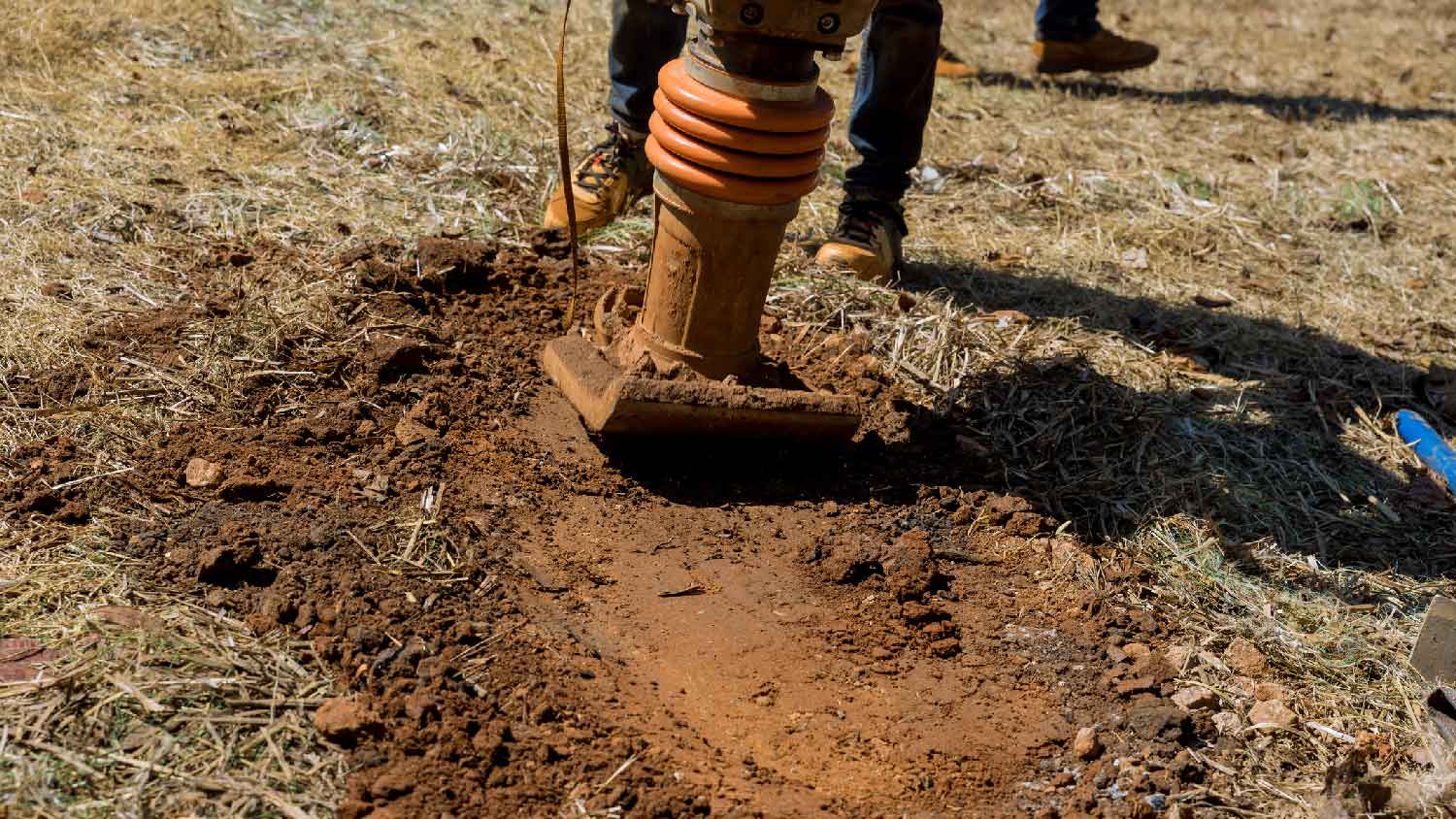
The average cost to connect to a public sewer line can vary depending on the linear foot, piping material, local regulations, and more.
Cover the mess without the stress


Are you ready to tackle that old cesspool head-on? The good news is you can do it on your own. Read on to learn what safety gear and tools you’ll need as well as the local rules around filing in cesspools. From digging it out to managing the waste, we've got you covered whether you're in it for the eco-friendly vibe or just reclaiming your backyard.
Filling in that old cesspool is about more than tidying up. For starters, forgotten cesspools are like ticking environmental time bombs. They can leak nasty stuff into the groundwater, affecting water quality and health.
Have you ever thought about the gasses neglected cesspools can belch out? It's not great for the air you breathe. Plus, they're accidents waiting to happen. Imagine a collapse or someone taking an unexpected dive down the cesspool hole!
By giving old cesspools a proper send-off, you’re not just cleaning up but also looking out for your health, safety, and the planet.
Filling in an old cesspool is a very smart move—as we may have mentioned above—and doing some straightforward prep can make the DIY process a bit easier. With safety, compliance, and the right tools, you'll be on your way to a successful project.
Gather safety tools: Gloves, boots, and eye protection are a must. If gasses are present, a gas monitor is also necessary for a safe working environment.
Gather your tools and equipment beforehand: This will streamline the excavation and filling tasks and minimize the risk of delays and complications.
Get some clean fill material: Gravel or soil are great as filling for the cesspool.
Confirm local regulations: Permits may be required for cesspool filling compliance.
Plan for disposal of waste materials: Some may be recyclable, while others require professional disposal.
Identify and mark underground utilities: Avoid accidental damage during excavation by knowing where your utilities are located.

Whether you're motivated by environmental concerns or regulatory compliance or just want to reclaim your space, careful planning is required if you’re planning on filling in your cesspool on your own. Follow the five steps below to address each phase of a cesspool closure so you can easily navigate the process.
Begin the cesspool filling process by meticulously clearing out any debris and excavating the designated area.
Use tools such as a pickaxe and shovel to break down and remove solid materials.
Then, transport the debris away using a wheelbarrow for a clutter-free and safe work environment.
With the cesspool prepped and cleared, add the chosen fill material—gravel, soil or a combination—deliberately and gradually. The key is to layer the fill material, compacting each layer with precision using a compactor. This slow approach minimizes the risk of future settling issues, establishing a robust foundation for the filled area.

Compaction should be done with extra care to ensure a solid and stable result. Use the compactor after each layer of fill is added.
The goal is not only to prevent settling but also to create a level surface. This step is critical for the filled area's stability and long-term resilience.
Level each filled area using tools such as a rake. Pay attention to any variations and make adjustments so there isn’t any sloping.
Once the cesspool is adequately filled and leveled, turn your attention to the finishing touches.
Cover the filled area with topsoil or an appropriate material and level it one more time.
Consider incorporating landscaping elements, such as planting grass or other vegetation, to reclaim the space and contribute to environmental sustainability.
Filling in a cesspool can be a DIY job, but the process can involve tricky stuff like digging, waste management, and navigating regulations.
Opting for a professional contractor when filling in your cesspool also makes a lot of sense. Pros have the right gear to get jobs like this done quickly, reducing the chance of hiccups. It's like outsourcing the headache so you can kick back and relax, knowing your cesspool is in capable hands. Hiring a septic contractor near you guarantees a hassle-free job.
Custom Paint Jobs LLC turned our outdated bathroom into a modern masterpiece.
Window Depot did an amazing job on my deck. I wasnt sure what I wanted to do, but their composite decking was affordable and will last a long time. I am excited to have family over, and I am no longer embarrassed by my backyard. Jeff and the ground crew were polite, respectful, and caring for...
AFS was excellent from start to finish. Jess, the sales associate, was fantastic...very knowledgeable and very professional. The installation crew was excellent. I couldn't be more pleased with the process. Best of all, my new floor looks fantastic!
We used Unique Hardwood Floor LLC three years ago to work on the floors of a 70 year old home that needed a great deal of work. Some floors needed repairs, some were replaced and others just needed to be refinished. It was a complicated job as they needed to blend the old and the new to...
Horrible. Did not reply to my numerous Emails and phone calls.
Very good and professional. Happy customer
From average costs to expert advice, get all the answers you need to get your job done.

The average cost to connect to a public sewer line can vary depending on the linear foot, piping material, local regulations, and more.

The average cost to connect to a public sewer line in Columbus, OH, depends on the linear footage, piping material, local regulations, and more.

Need to know what sewer line replacement costs in Detroit, MI? This guide will help you prepare to budget for sewer line replacement done by local contractors.

A sewage smell outdoors is not only gross, but it indicates a possible health hazard. Learn how to get rid of the septic smell outside and when to call a pro.

Gurgling, slow drains could mean a main sewer line clog, which can be messy and smelly. Learn how to clear a main sewer line clog yourself with this guide.

Knowing your septic tank’s location can help you clean and repair the system quicker. Learn five methods for how to find a septic tank lid with this guide.